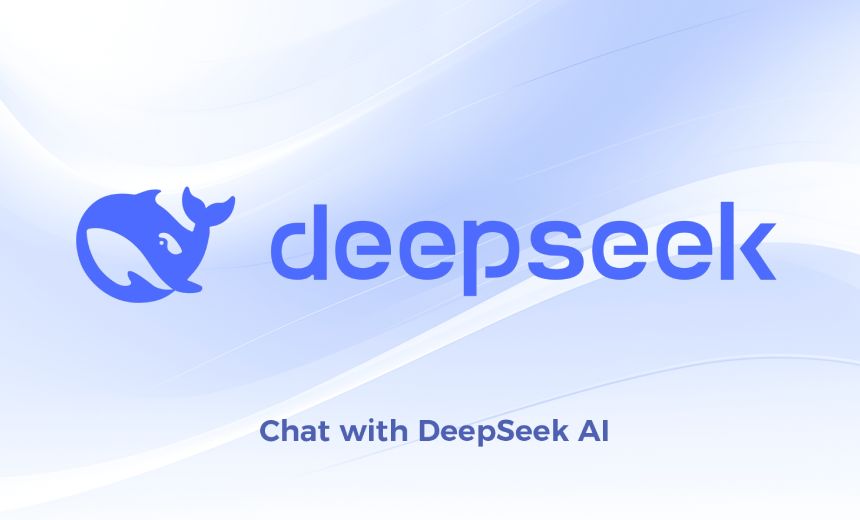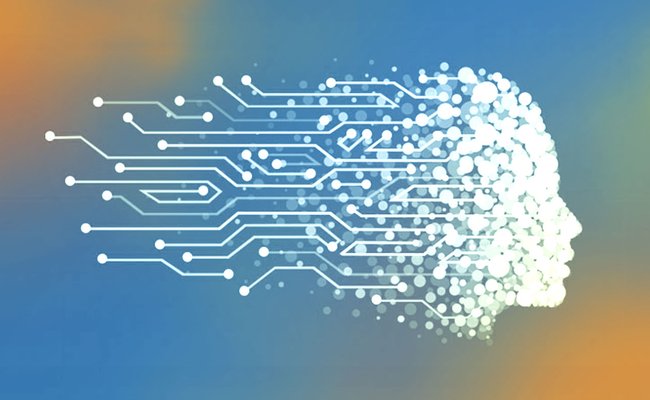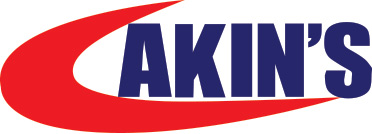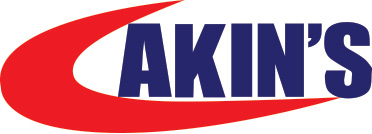
B 3ta
Add a review FollowOverview
-
Founded Date September 19, 1953
-
Sectors Information Technology
-
Posted Jobs 0
-
Viewed 28
Company Description
Ralston, Hemmendinger & Reilly (2025), p

Infotech (IT) is a set of associated fields that include computer systems, software application, programs languages, data and info processing, and storage. [1] IT forms part of information and interactions technology (ICT). [2] An info technology system (IT system) is generally an info system, a communications system, or, more particularly speaking, a computer system – consisting of all hardware, software application, and peripheral equipment – run by a minimal group of IT users, and an IT project usually refers to the commissioning and execution of an IT system. [3] IT systems play an essential function in helping with effective information management, enhancing communication networks, and supporting organizational procedures across numerous markets. Successful IT projects need precise planning and ongoing maintenance to make sure ideal functionality and alignment with organizational objectives. [4]
Although humans have been saving, retrieving, controling, analysing and interacting information given that the earliest writing systems were developed, [5] the term information technology in its modern-day sense initially appeared in a 1958 article released in the Harvard Business Review; authors Harold J. Leavitt and Thomas L. Whisler commented that “the new technology does not yet have a single established name. We will call it details innovation (IT).” [6] Their definition includes 3 categories: methods for processing, the application of analytical and mathematical approaches to decision-making, and the simulation of higher-order believing through computer system programs. [6]
The term is typically used as a synonym for computers and computer networks, however it likewise incorporates other details circulation innovations such as tv and telephones. Several service or products within an economy are associated with info technology, including computer system hardware, software application, electronic devices, semiconductors, web, telecom devices, and e-commerce. [7] [a]
Based upon the storage and processing innovations utilized, it is possible to distinguish four distinct stages of IT development: pre-mechanical (3000 BC – 1450 AD), mechanical (1450 – 1840), electromechanical (1840 – 1940), and electronic (1940 to present). [5]
Information technology is a branch of computer technology, specified as the study of treatments, structures, and the processing of different kinds of data. As this field continues to develop internationally, its priority and importance have grown, resulting in the intro of computer system science-related courses in K-12 education.
Ideas of computer technology were very first pointed out before the 1950s under the Massachusetts Institute of Technology (MIT) and Harvard University, where they had actually discussed and started thinking of computer circuits and mathematical estimations. As time went on, the field of information innovation and computer technology became more complex and had the ability to handle the processing of more information. Scholarly posts started to be published from various companies. [9]
During the early computing, Alan Turing, J. Presper Eckert, and John Mauchly were thought about some of the significant pioneers of computer technology in the mid-1900s. Providing such credit for their developments, the majority of their efforts were focused on creating the first digital computer system. Along with that, topics such as artificial intelligence began to be raised as Turing was starting to question such technology of the time duration. [10]
Devices have been used to aid calculation for countless years, most likely initially in the type of a tally stick. [11] The Antikythera system, dating from about the start of the first century BC, is typically considered the earliest recognized mechanical analog computer system, and the earliest known tailored mechanism. [12] Comparable geared devices did not emerge in Europe till the 16th century, and it was not until 1645 that the very first mechanical calculator capable of carrying out the 4 standard arithmetical operations was developed. [13]
Electronic computers, using either passes on or valves, started to appear in the early 1940s. The electromechanical Zuse Z3, finished in 1941, was the world’s very first programmable computer, and by contemporary requirements among the very first makers that might be thought about a complete computing device. During the Second World War, Colossus established the first electronic digital computer system to decrypt German messages. Although it was programmable, it was not general-purpose, being created to carry out just a single task. It likewise did not have the ability to store its program in memory; programming was carried out using plugs and changes to alter the internal wiring. [14] The very first recognizably modern electronic digital stored-program computer system was the Manchester Baby, which ran its very first program on 21 June 1948. [15]
The advancement of transistors in the late 1940s at Bell Laboratories allowed a new generation of computer systems to be developed with significantly decreased power consumption. The very first commercially available stored-program computer system, the Ferranti Mark I, included 4050 valves and had a power consumption of 25 kilowatts. By comparison, the very first transistorized computer developed at the University of Manchester and functional by November 1953, consumed only 150 watts in its final variation. [16]
Several other advancements in semiconductor technology include the incorporated circuit (IC) developed by Jack Kilby at Texas Instruments and Robert Noyce at Fairchild Semiconductor in 1959, silicon dioxide surface passivation by Carl Frosch and Lincoln Derick in 1955, [17] the very first planar silicon dioxide transistors by Frosch and Derick in 1957, [18] the MOSFET presentation by a Bell Labs group. [19] [20] [21] [22] the planar procedure by Jean Hoerni in 1959, [23] [24] [25] and the microprocessor invented by Ted Hoff, Federico Faggin, Masatoshi Shima, and Stanley Mazor at Intel in 1971. These important creations caused the advancement of the individual computer (PC) in the 1970s, and the development of info and communications technology (ICT). [26]
By 1984, according to the National Westminster Bank Quarterly Review, the term infotech had been redefined as “The development of cable television was made possible by the convergence of telecoms and computing technology (… generally understood in Britain as infotech).” We then start to see the look of the term in 1990 included within documents for the International Organization for Standardization (ISO). [27]
Innovations in innovation have currently transformed the world by the twenty-first century as people had the ability to gain access to various online services. This has actually altered the workforce considerably as thirty percent of U.S. workers were currently in careers in this profession. 136.9 million people were personally connected to the Internet, which was comparable to 51 million households. [28] In addition to the Internet, brand-new types of technology were likewise being introduced around the world, which has enhanced performance and made things much easier around the world.
In addition to technology changing society, countless processes could be performed in seconds. Innovations in interaction were likewise crucial as individuals started to count on the computer to interact through telephone lines and cable television. The introduction of the e-mail was considered revolutionary as “business in one part of the world could interact by e-mail with suppliers and buyers in another part of the world …” [29]
Not just personally, computer systems and technology have actually also transformed the marketing market, leading to more buyers of their items. In 2002, Americans went beyond $28 billion in products just online alone while e-commerce a decade later on resulted in $289 billion in sales. [29] And as computer systems are quickly becoming more advanced every day, they are becoming more used as people are becoming more reliant on them throughout the twenty-first century.
Data processing
Storage
Early electronic computers such as Colossus made usage of punched tape, a long strip of paper on which information was represented by a series of holes, an innovation now outdated. [30] Electronic data storage, which is used in contemporary computer systems, dates from World War II, when a kind of delay-line memory was established to eliminate the clutter from radar signals, the first useful application of which was the mercury delay line. [31] The very first random-access digital storage device was the Williams tube, which was based upon a standard cathode ray tube. [32] However, the details stored in it and delay-line memory was volatile in the reality that it needed to be continuously refreshed, and hence was lost once power was removed. The earliest kind of non-volatile computer system storage was the magnetic drum, invented in 1932 [33] and used in the Ferranti Mark 1, the world’s very first commercially offered general-purpose electronic computer. [34]
IBM introduced the first tough disk drive in 1956, as a component of their 305 RAMAC computer system. [35]:6 Most digital information today is still saved magnetically on hard drives, or optically on media such as CD-ROMs. [36]:4 -5 Until 2002 most details was saved on analog devices, however that year digital storage capability exceeded analog for the very first time. As of 2007 [upgrade], nearly 94% of the information stored worldwide was held digitally: [37] 52% on hard drives, 28% on optical gadgets, and 11% on digital magnetic tape. It has actually been approximated that the around the world capacity to store information on electronic gadgets grew from less than 3 exabytes in 1986 to 295 exabytes in 2007, [38] doubling roughly every 3 years. [39]
Databases

Database Management Systems (DMS) emerged in the 1960s to attend to the issue of keeping and obtaining big amounts of information accurately and quickly. An early such system was IBM’s Information Management System (IMS), [40] which is still extensively released more than 50 years later. [41] IMS shops data hierarchically, [40] but in the 1970s Ted Codd proposed an alternative relational storage design based on set theory and predicate logic and the familiar ideas of tables, rows, and columns. In 1981, the very first commercially offered relational database management system (RDBMS) was released by Oracle. [42]
All DMS include elements, they permit the data they save to be accessed at the same time by numerous users while maintaining its stability. [43] All databases prevail in one point that the structure of the data they include is defined and stored separately from the information itself, in a database schema. [40]
In current years, the extensible markup language (XML) has ended up being a popular format for data representation. Although XML information can be stored in regular file systems, it is typically held in relational databases to make the most of their “robust implementation validated by years of both theoretical and practical effort.” [44] As an evolution of the Standard Generalized Markup Language (SGML), XML’s text-based structure provides the benefit of being both device- and human-readable. [45]
Transmission
Data transmission has three aspects: transmission, propagation, and reception. [46] It can be broadly categorized as broadcasting, in which details is sent unidirectionally downstream, or telecoms, with bidirectional upstream and downstream channels. [38]
XML has been increasingly employed as a way of information interchange since the early 2000s, [47] particularly for machine-oriented interactions such as those included in web-oriented protocols such as SOAP, [45] explaining “data-in-transit instead of … data-at-rest”. [47]
Manipulation
Hilbert and Lopez recognize the exponential rate of technological modification (a kind of Moore’s law): devices’ application-specific capability to calculate info per capita approximately doubled every 14 months between 1986 and 2007; the per capita capability of the world’s general-purpose computer systems doubled every 18 months during the same twenty years; the international telecommunication capability per capita doubled every 34 months; the world’s storage capability per capita needed roughly 40 months to double (every 3 years); and per capita broadcast information has doubled every 12.3 years. [38]
Massive amounts of information are stored around the world every day, however unless it can be analyzed and presented efficiently it basically lives in what have actually been called information tombs: “data archives that are hardly ever gone to”. [48] To attend to that problem, the field of data mining – “the process of finding intriguing patterns and knowledge from large amounts of data” [49] – emerged in the late 1980s. [50]
The innovation and services it offers sending and receiving electronic messages (called “letters” or “electronic letters”) over a distributed (consisting of international) computer system network. In regards to the composition of aspects and the principle of operation, e-mail virtually repeats the system of routine (paper) mail, borrowing both terms (mail, letter, envelope, accessory, box, shipment, and others) and particular features – ease of usage, message transmission hold-ups, sufficient reliability and at the same time no guarantee of delivery. The advantages of e-mail are: quickly perceived and kept in mind by a person addresses of the type user_name@domain_name (for example, somebody@example.com); the capability to move both plain text and formatted, along with approximate files; independence of servers (in the basic case, they deal with each other directly); adequately high dependability of message delivery; ease of use by humans and programs.
Disadvantages of e-mail: the existence of such a phenomenon as spam (huge advertising and viral mailings); the theoretical impossibility of guaranteed delivery of a particular letter; possible hold-ups in message delivery (up to numerous days); limits on the size of one message and on the overall size of messages in the mail box (individual for users).
Search system
A software and hardware complex with a web interface that offers the capability to search for information on the Internet. An online search engine usually suggests a website that hosts the interface (front-end) of the system. The software application part of a search engine is an online search engine (search engine) – a set of programs that provides the performance of a search engine and is usually a trade trick of the search engine designer business. Most online search engine search for details on Internet sites, but there are also systems that can look for files on FTP servers, products in online shops, and info on Usenet newsgroups. Improving search is one of the concerns of the contemporary Internet (see the Deep Web article about the primary problems in the work of search engines).
Commercial impacts
Companies in the information innovation field are typically talked about as a group as the “tech sector” or the “tech market.” [51] [52] [53] These titles can be misleading at times and ought to not be misinterpreted for “tech business;” which are usually large scale, for-profit corporations that offer consumer technology and software. It is also worth keeping in mind that from a service viewpoint, Information technology departments are a “expense center” most of the time. An expense center is a department or personnel which incurs expenditures, or “costs”, within a company instead of generating earnings or earnings streams. Modern businesses rely heavily on innovation for their day-to-day operations, so the costs entrusted to cover innovation that facilitates organization in a more effective way are generally seen as “simply the expense of operating.” IT departments are assigned funds by senior management and must try to achieve the preferred deliverables while remaining within that budget. Government and the economic sector might have various funding mechanisms, however the principles are more-or-less the same. This is a typically neglected reason for the fast interest in automation and expert system, however the consistent pressure to do more with less is opening the door for automation to take control of a minimum of some small operations in large business.
Many business now have IT departments for handling the computer systems, networks, and other technical locations of their organizations. Companies have likewise looked for to integrate IT with service outcomes and decision-making through a BizOps or organization operations department. [54]
In a business context, the Information Technology Association of America has actually specified infotech as “the research study, style, development, application, application, support, or management of computer-based info systems”. [55] [page required] The responsibilities of those working in the field consist of network administration, software application development and installation, and the preparation and management of an organization’s technology life process, by which hardware and software application are kept, upgraded, and changed.
Information services
Information services is a term somewhat loosely applied to a range of IT-related services provided by industrial business, [56] [57] [58] along with data brokers.
-.
U.S. Employment circulation of computer system systems design and related services, 2011 [59]
-.
U.S. Employment in the computer system systems and style associated services industry, in thousands, 1990-2011 [59]
-.
U.S. Occupational development and salaries in computer system systems design and related services, 2010-2020 [59]
-.
U.S. projected percent modification in employment in selected professions in computer system systems design and related services, 2010-2020 [59]
-.
U.S. forecasted typical annual percent modification in output and employment in chosen markets, 2010-2020 [59]
Ethics
The field of details ethics was developed by mathematician Norbert Wiener in the 1940s. [60]:9 Some of the ethical issues associated with using details technology include: [61]:20 -21
– Breaches of copyright by those downloading files saved without the permission of the copyright holders.
– Employers monitoring their workers’ e-mails and other Internet use.
Unsolicited emails.
Hackers accessing online databases.
– Web websites installing cookies or spyware to monitor a user’s online activities, which may be utilized by data brokers.
IT tasks
Research recommends that IT jobs in service and public administration can easily end up being substantial in scale. Work carried out by McKinsey in cooperation with the University of Oxford recommended that half of all large-scale IT jobs (those with preliminary cost price quotes of $15 million or more) frequently failed to maintain expenses within their preliminary spending plans or to complete on time. [62]
Information and interactions technology (ICT).
IT infrastructure.
Outline of infotech.
Knowledge society.
Notes
^ On the later more broad application of the term IT, Keary remarks: “In its original application ‘information innovation’ was suitable to explain the merging of technologies with application in the vast field of data storage, retrieval, processing, and dissemination. This beneficial conceptual term has actually since been converted to what professes to be of great usage, however without the support of meaning … the term IT lacks substance when used to the name of any function, discipline, or position.” [8] References
Citations
^ Cosker, Glynn (2023 ), “What Is Infotech? A Novice’s Guide to the World of IT”, Technology Blog, Rasmussen University.
^ “Computer Technology Definition”. Law Insider. Retrieved 11 July 2022. ^ Forbes Technology Council, 16 Key Steps To Successful IT Project Management, published 10 September 2020, accessed 23 June 2023
^ Hindarto, Djarot (30 August 2023). “The Management of Projects is Improved Through Enterprise Architecture on Project Management Application Systems”. International Journal Software Engineering and Computer Science (IJSECS). 3 (2 ): 151-161. doi:10.35870/ ijsecs.v3i2.1512. ISSN 2776-3242.
^ a b Butler, Jeremy G., A History of Infotech and Systems, University of Arizona, archived from the original on 5 August 2012, obtained 2 August 2012
^ a b Leavitt, Harold J.; Whisler, Thomas L. (1958 ), “Management in the 1980s”, Harvard Business Review, 11.
^ Chandler, Daniel; Munday, Rod (10 February 2011), “Infotech”, A Dictionary of Media and Communication (initially ed.), Oxford University Press, ISBN 978-0199568758, obtained 1 August 2012, Commonly a synonym for computer systems and computer networks but more broadly designating any technology that is utilized to generate, shop, procedure, and/or distribute details digitally, consisting of tv and telephone.
^ Ralston, Hemmendinger & Reilly (2000 ), p. 869.
^ Slotten, Hugh Richard (1 January 2014). The Oxford Encyclopedia of the History of American Science, Medicine, and Technology. Oxford University Press. doi:10.1093/ acref/9780199766666.001.0001. ISBN 978-0-19-976666-6.
^ Henderson, H. (2017 ). computer system science. In H. Henderson, Facts on File science library: Encyclopedia of computer technology and technology. (3rd ed.). [Online] New York City: Facts On File.
^ Schmandt-Besserat, Denise (1981 ), “Decipherment of the earliest tablets”, Science, 211 (4479 ): 283-285, Bibcode:1981 Sci … 211..283 S, doi:10.1126/ science.211.4479.283, ISSN 0036-8075, PMID 17748027.
^ Wright (2012 ), p. 279.
^ Chaudhuri (2004 ), p. 3.
^ Lavington (1980 ), p. 11.
^ Enticknap, Nicholas (Summer 1998), “Computing’s Golden Jubilee”, Resurrection (20 ), ISSN 0958-7403, archived from the initial on 9 January 2012, retrieved 19 April 2008.
^ Cooke-Yarborough, E. H. (June 1998), “Some early transistor applications in the UK”, Engineering Science & Education Journal, 7 (3 ): 100-106, doi:10.1049/ esej:19980301 (non-active 7 December 2024), ISSN 0963-7346 citation: CS1 maint: DOI inactive since December 2024 (link).
^ US2802760A, Lincoln, Derick & Frosch, Carl J., “Oxidation of semiconductive surfaces for controlled diffusion”, released 1957-08-13
^ Frosch, C. J.; Derick, L (1957 ). “Surface Protection and Selective Masking during Diffusion in Silicon”. Journal of the Electrochemical Society. 104 (9 ): 547. doi:10.1149/ 1.2428650.
^ KAHNG, D. (1961 ). “Silicon-Silicon Dioxide Surface Device”. Technical Memorandum of Bell Laboratories: 583-596. doi:10.1142/ 9789814503464_0076. ISBN 978-981-02-0209-5.
^ Lojek, Bo (2007 ). History of Semiconductor Engineering. Berlin, Heidelberg: Springer-Verlag Berlin Heidelberg. p. 321. ISBN 978-3-540-34258-8.
^ Ligenza, J.R.; Spitzer, W.G. (1960 ). “The mechanisms for silicon oxidation in steam and oxygen”. Journal of Physics and Chemistry of Solids. 14: 131-136. Bibcode:1960 JPCS … 14..131 L. doi:10.1016/ 0022-3697( 60 )90219-5.
^ Lojek, Bo (2007 ). History of Semiconductor Engineering. Springer Science & Business Media. p. 120. ISBN 9783540342588.
^ Lojek, Bo (2007 ). History of Semiconductor Engineering. Springer Science & Business Media. pp. 120 & 321-323. ISBN 9783540342588.
^ Bassett, Ross Knox (2007 ). To the Digital Age: Research Labs, Start-up Companies, and the Rise of MOS Technology. Johns Hopkins University Press. p. 46. ISBN 9780801886393.
^ US 3025589 Hoerni, J. A.: “Method of Manufacturing Semiconductor Devices” submitted May 1, 1959
^ “Advanced details on the Nobel Prize in Physics 2000” (PDF). Nobel Prize. June 2018. Archived (PDF) from the initial on 17 August 2019. Retrieved 17 December 2019.
^ Information innovation. (2003 ). In E.D. Reilly, A. Ralston & D. Hemmendinger (Eds.), Encyclopedia of computer science. (4th ed.).
^ Stewart, C.M. (2018 ). Computers. In S. Bronner (Ed.), Encyclopedia of American research studies. [Online] Johns Hopkins University Press.
^ a b Northrup, C.C. (2013 ). Computers. In C. Clark Northrup (Ed.), Encyclopedia of world trade: from ancient times to the present. [Online] London: Routledge.
^ Alavudeen & Venkateshwaran (2010 ), p. 178.
^ Lavington (1998 ), p. 1.
^ “Early computers at Manchester University”, Resurrection, 1 (4 ), Summer 1992, ISSN 0958-7403, archived from the initial on 28 August 2017, recovered 19 April 2008.
^ Universität Klagenfurt (ed.), “Magnetic drum”, Virtual Exhibitions in Informatics, archived from the original on 21 June 2006, retrieved 21 August 2011.
^ The Manchester Mark 1, University of Manchester, archived from the original on 21 November 2008, obtained 24 January 2009.
^ Khurshudov, Andrei (2001 ), The Essential Guide to Computer Data Storage: From Floppy to DVD, Prentice Hall, ISBN 978-0-130-92739-2.
^ Wang, Shan X.; Taratorin, Aleksandr Markovich (1999 ), Magnetic Information Storage Technology, Academic Press, ISBN 978-0-12-734570-3.
^ Wu, Suzanne, “How Much Information Exists on the planet?”, USC News, University of Southern California, recovered 10 September 2013.
^ a b c Hilbert, Martin; López, Priscila (1 April 2011), “The World’s Technological Capacity to Store, Communicate, and Compute Information”, Science, 332 (6025 ): 60-65, Bibcode:2011 Sci … 332 … 60H, doi:10.1126/ .1200970, PMID 21310967, S2CID 206531385.
^ “Americas occasions – Video animation on The World’s Technological Capacity to Store, Communicate, and Compute Information from 1986 to 2010”. The Economist. Archived from the initial on 18 January 2012.
^ a b c Ward & Dafoulas (2006 ), p. 2.
^ Olofson, Carl W. (October 2009), A Platform for Enterprise Data Services (PDF), IDC, archived from the original (PDF) on 25 December 2013, retrieved 7 August 2012.
^ Ward & Dafoulas (2006 ), p. 3.
^ Silberschatz, Abraham (2010 ). Database System Concepts. McGraw-Hill College. ISBN 978-0-07-741800-7.
^ Pardede (2009 ), p. 2.
^ a b Pardede (2009 ), p. 4.
^ Weik (2000 ), p. 361.
^ a b Pardede (2009 ), p. xiii.
^ Han, Kamber & Pei (2011 ), p. 5.
^ Han, Kamber & Pei (2011 ), p. 8.
^ Han, Kamber & Pei (2011 ), p. xxiii.
^ “Technology Sector Snapshot”. The New York Times. Archived from the initial on 13 January 2017. Retrieved 12 January 2017.
^ “Our programs, campaigns and collaborations”. TechUK. Retrieved 12 January 2017.
^ “Cyberstates 2016”. CompTIA. Retrieved 12 January 2017.
^ “Manifesto Hatched to Close Gap Between Business and IT”. TechNewsWorld. 22 October 2020. Retrieved 22 March 2021.
^ Proctor, K. Scott (2011 ), Optimizing and Assessing Information Technology: Improving Business Project Execution, John Wiley & Sons, ISBN 978-1-118-10263-3.
^ “Top Information Services business”. VentureRadar. Retrieved 8 March 2021.
^ “Follow Information Services on Index.co”. Index.co. Retrieved 8 March 2021.
^ Publishing, Value Line. “Industry Overview: Information Services”. Value Line. Archived from the original on 20 June 2021. Retrieved 8 March 2021.
^ a b c d e Lauren Csorny (9 April 2013). “U.S. Careers in the growing field of infotech services”. U.S. Bureau of Labor Statistics.
^ Bynum, Terrell Ward (2008 ), “Norbert Wiener and the Rise of Information Ethics”, in van den Hoven, Jeroen; Weckert, John (eds.), Infotech and Moral Philosophy, Cambridge University Press, ISBN 978-0-521-85549-5.
^ Reynolds, George (2009 ), Ethics in Infotech, Cengage Learning, ISBN 978-0-538-74622-9.
^ Bloch, M., Blumberg, S. and Laartz, J., Delivering massive IT projects on time, on budget plan, and on worth, released 1 October 2012, accessed 23 June 2023
Bibliography

Alavudeen, A.; Venkateshwaran, N. (2010 ), Computer Integrated Manufacturing, PHI Learning, ISBN 978-81-203-3345-1
Chaudhuri, P. Pal (2004 ), Computer Organization and Design, PHI Learning, ISBN 978-81-203-1254-8
Han, Jiawei; Kamber, Micheline; Pei, Jian (2011 ), Data Mining: Concepts and Techniques (3rd ed.), Morgan Kaufmann, ISBN 978-0-12-381479-1
Lavington, Simon (1980 ), Early British Computers, Manchester University Press, ISBN 978-0-7190-0810-8
Lavington, Simon (1998 ), A History of Manchester Computers (2nd ed.), The British Computer Society, ISBN 978-1-902505-01-5
Pardede, Eric (2009 ), Open and Novel Issues in XML Database Applications, Information Science Reference, ISBN 978-1-60566-308-1
Ralston, Anthony; Hemmendinger, David; Reilly, Edwin D., eds. (2000 ), Encyclopedia of Computer Science (4th ed.), Nature Publishing Group, ISBN 978-1-56159-248-7
van der Aalst, Wil M. P. (2011 ), Process Mining: Discovery, Conformance and Enhancement of Business Processes, Springer, ISBN 978-3-642-19344-6
Ward, Patricia; Dafoulas, George S. (2006 ), Database Management Systems, Cengage Learning EMEA, ISBN 978-1-84480-452-8
Weik, Martin (2000 ), Computer Science and Communications Dictionary, vol. 2, Springer, ISBN 978-0-7923-8425-0
Wright, Michael T. (2012 ), “The Front Dial of the Antikythera Mechanism”, in Koetsier, Teun; Ceccarelli, Marco (eds.), Explorations in the History of Machines and Mechanisms: Proceedings of HMM2012, Springer, pp. 279-292, ISBN 978-94-007-4131-7
Further reading
Allen, T.; Morton, M. S. Morton, eds. (1994 ), Infotech and the Corporation of the 1990s, Oxford University Press.
– Gitta, Cosmas and South, David (2011 ). Southern Innovator Magazine Issue 1: Mobile Phones and Information Technology: United Nations Office for South-South Cooperation. ISSN 2222-9280.
Gleick, James (2011 ). The Information: A History, a Theory, a Flood. New York: Pantheon Books.
Price, Wilson T. (1981 ), Introduction to Computer Data Processing, Holt-Saunders International Editions, ISBN 978-4-8337-0012-2.
– Shelly, Gary, Cashman, Thomas, Vermaat, Misty, and Walker, Tim. (1999 ). Discovering Computers 2000: Concepts for a Connected World. Cambridge, Massachusetts: Course Technology.
– Webster, Frank, and Robins, Kevin. (1986 ). Infotech – A Luddite Analysis. Norwood, NJ: Ablex.

